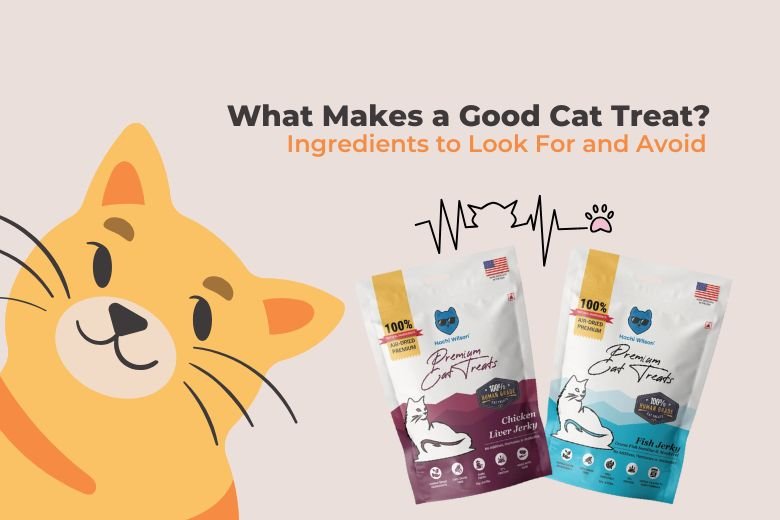Why Does Your Cat’s Diet Need Variety?
Have you ever noticed your cat turning their nose up at the same old kibble? Cats, like humans, crave variety in their meals. A monotonous diet can lead to boredom or even nutrient deficiencies over time. Introducing fish cat food and treats not only spices up their menu but also provides essential nutrients like omega-3 fatty acids for a shiny coat and healthy heart. By learning how to add variety to your cat’s diet with fish cat food and treats, you’re ensuring your furry friend stays happy and healthy.
Fish-based foods are a fantastic way to diversify your cat’s diet, but not all options are created equal. Let’s explore how to choose the best fish cat food and treats, what ingredients to prioritize, and which ones to avoid.
Why Choose Fish for Your Cat’s Diet?
Cats are obligate carnivores, meaning their bodies thrive on animal-based proteins. Fish, such as salmon, tuna, and sardines, offers high-quality protein and healthy fats that support your cat’s energy, skin, and coat health. According to a 2023 study by the American Veterinary Medical Association, omega-3s in fish can reduce inflammation and improve joint health in cats.
Fish cat food and treats also appeal to picky eaters, making it easier to add variety to their diet. However, balance is key—too much fish can lead to issues like mercury exposure or vitamin imbalances.
What to Look for in Fish Cat Food
When selecting fish cat food, prioritize quality and nutrition. Here’s what to check on the label:
- Named Fish Sources: Look for specific fish like “salmon” or “tuna” rather than vague terms like “fish meal.”
- High Protein Content: Cats need at least 26% protein in their diet, per AAFCO guidelines.
- Omega-3 Fatty Acids: Ingredients like salmon oil or mackerel provide these heart-healthy fats.
- No Artificial Additives: Avoid artificial colors, flavors, or preservatives like BHA/BHT.
Choosing high-quality fish cat food ensures you’re adding variety to your cat’s diet with fish cat food and treats that are both safe and nutritious.
Wet vs. Dry Fish Cat Food
Wet fish cat food, like canned salmon or tuna, offers higher moisture content, which supports hydration—crucial for cats prone to urinary issues. Dry fish cat food, on the other hand, is convenient and often more affordable. A mix of both can add texture variety to your cat’s diet.
How to Choose Safe Fish Cat Treats
Fish cat treats are a great way to reward your cat while introducing variety. Here’s how to pick the best ones:
- Single-Ingredient Treats: Freeze-dried salmon or tuna treats are minimally processed and retain nutrients.
- Low-Calorie Options: Treats should make up no more than 10% of your cat’s daily calories, per veterinary recommendations.
- No Fillers: Avoid treats with corn, wheat, or soy, which offer little nutritional value.
By selecting high-quality fish cat treats, you’re enhancing your cat’s diet with healthy, exciting options.
Ingredients to Avoid in Fish Cat Food and Treats
Not all fish-based products are safe. Some ingredients can harm your cat’s health:
- Artificial Preservatives: BHA, BHT, and ethoxyquin are linked to health risks in pets.
- High Mercury Fish: Limit tuna and swordfish, which may contain heavy metals.
- Excessive Carbohydrates: Ingredients like rice or potatoes can lead to weight gain in cats.
Reading labels carefully is essential when learning how to add variety to your cat’s diet with fish cat food and treats.
How Much Fish Is Too Much?
While fish is nutritious, overfeeding can cause problems. Fish-heavy diets may lead to thiamine deficiency or mercury buildup. Experts recommend fish-based meals or treats no more than 2–3 times per week. Rotate with other proteins like chicken or beef to maintain balance.
Can All Cats Eat Fish Cat Food?
Most cats can enjoy fish cat food, but some may have allergies. Signs of fish allergies include itching, vomiting, or diarrhea. If you suspect an allergy, consult your vet and switch to hypoallergenic options. Kittens and senior cats may also need tailored diets, so check with a professional before adding fish.
How to Introduce Fish to Your Cat’s Diet
To safely add fish cat food and treats, follow these steps:
- Start Small: Mix a small amount of fish cat food with their regular food.
- Monitor Reactions: Watch for digestive issues or allergies over 1–2 weeks.
- Gradual Increase: Slowly increase the portion of fish-based food or treats.
This approach ensures your cat adjusts well to the new flavors and textures.
Pairing Fish with Other Foods
Combine fish cat food with other proteins or vegetables like pumpkin for added variety. For example, a meal of salmon wet food paired with a chicken-based kibble can keep things interesting while maintaining nutritional balance.
Budget-Friendly Ways to Add Fish to Your Cat’s Diet
High-quality fish cat food doesn’t have to break the bank. Look for brands offering sustainable sardines or mackerel, which are often more affordable than salmon or tuna. Buying in bulk or choosing store brands with clear ingredient lists can also save money while adding variety to your cat’s diet with fish cat food and treats.
How to Add Variety to Your Cat’s Diet with Fish Cat Food and Treats – Frequently Asked Questions
What are the benefits of fish cat food?
Fish cat food provides omega-3 fatty acids, high-quality protein, and hydration (in wet food). It supports coat health and appeals to picky eaters. Learn more about choosing fish cat food.
Are fish cat treats safe for daily use?
Fish cat treats are safe in moderation, ideally limited to 10% of daily calories. Choose single-ingredient options to avoid fillers. See safe treat tips.
Can fish cat food cause allergies?
Some cats are allergic to fish, showing symptoms like itching or vomiting. Introduce fish gradually and consult a vet if issues arise. Read about allergies.
How often should I feed my cat fish-based food?
Feed fish cat food 2–3 times per week to avoid nutrient imbalances or mercury exposure. Rotate with other proteins for balance. Learn more about portions.
What fish is best for cats?
Salmon, sardines, and mackerel are excellent choices due to their low mercury content and high omega-3s. Avoid tuna-heavy diets. Check ingredient tips.
Conclusion
Adding variety to your cat’s diet with fish cat food and treats is a simple way to keep your pet healthy and excited about mealtime. By choosing high-quality products, avoiding harmful ingredients, and introducing fish gradually, you can enhance your cat’s nutrition without compromising safety. Have you tried fish-based foods with your cat? Share your experience or explore our guides on cat nutrition basics or choosing the best cat treats.




